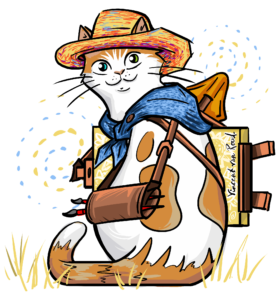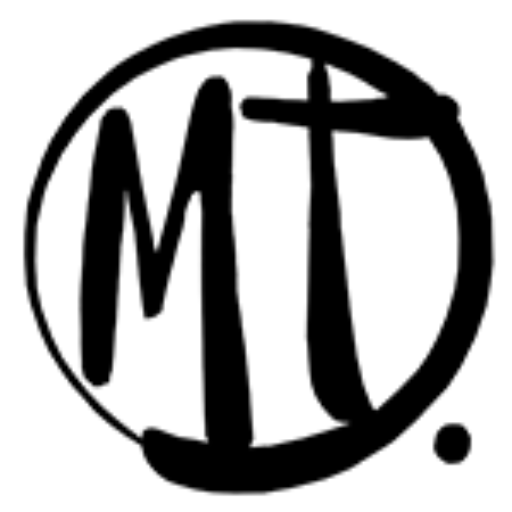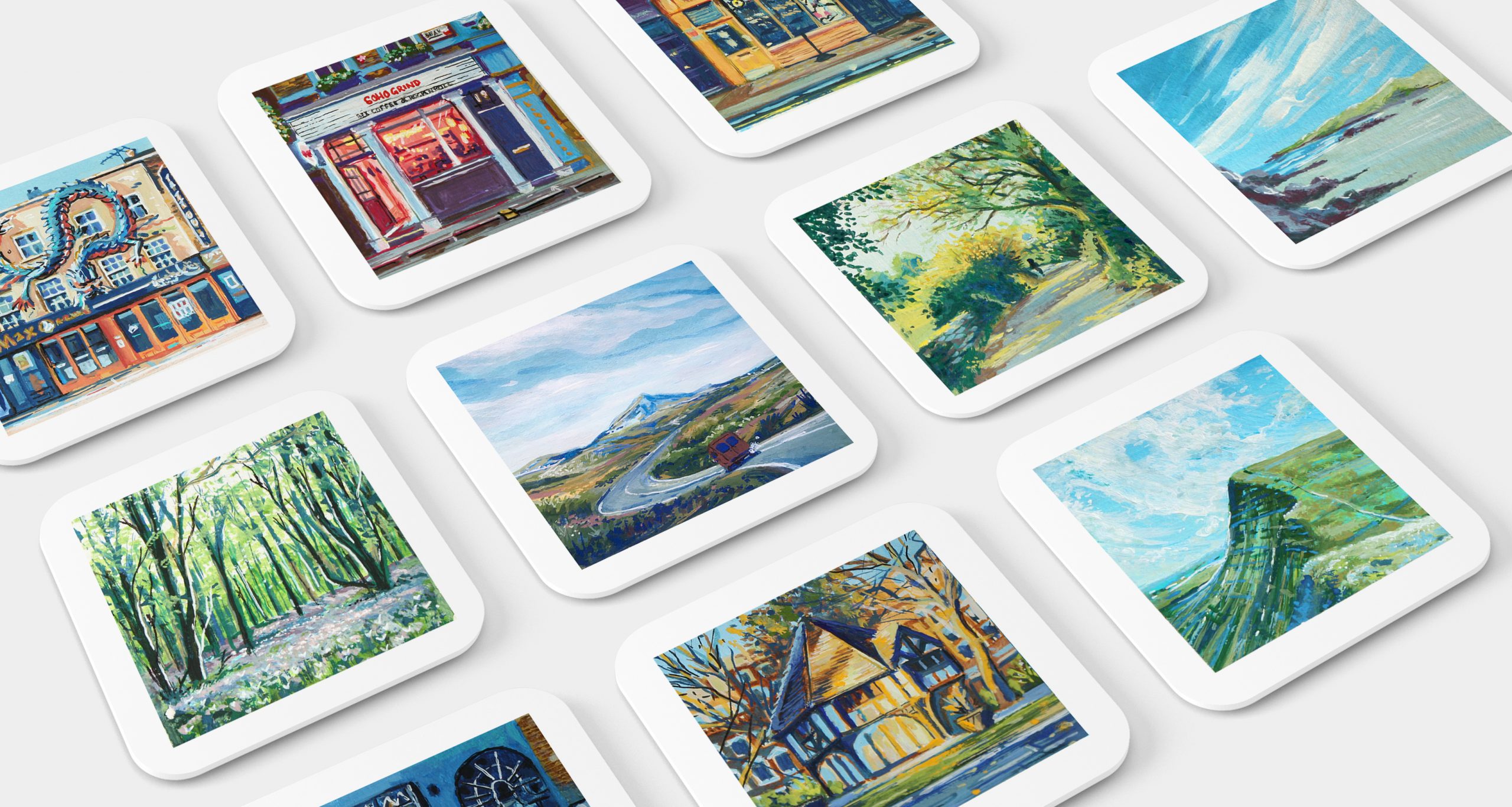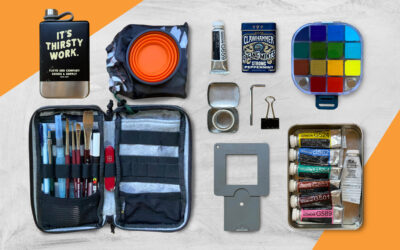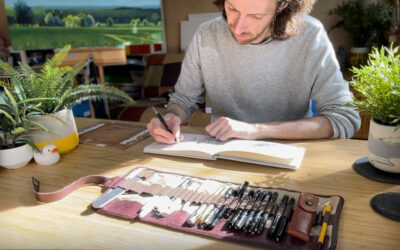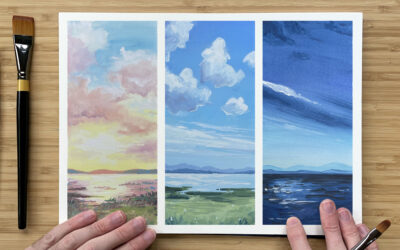Painting en plein air (“in the open air”) is a model for artists hoping to find inspiration in the great outdoors. The best place to start is by carrying a pocket sketchbook and a pen everywhere you go.If you’re feeling spicy then an elastic band to hold it all together but seriously, that’s it. However, let’s be real. We didn’t find ourselves in my arty little corner of the internet because we didn’t know that already. If you are looking to take your painting from the studio to the seaside, a city block, or the depth of the wilderness, here are some tips to guide you.
Keep it Simple
I love to paint using Gouache but regardless of if you’re using pencils, watercolours or oils. Limited palettes rule when it comes to travelling light. A careful consideration of colours before setting out can be beneficial, but so can working with the few colours that you already have. Don’t forget that you can mix your own greens, and the fewer colours you use the more harmonious the result.
Unless you are painting in the middle of a desert, there is really no need to carry heavy painting water. It’s usually pretty easy to find a supply of water on site for your painting needs, including rivers, streams, the sea, a local service station, shops and restaurants. The added bonus of “found” water is that it is local to your painting location, tying your work to its surroundings. And don’t worry about the seawater longevity myth. After all, Turner used seawater for many of his coastal watercolours and they still look good!
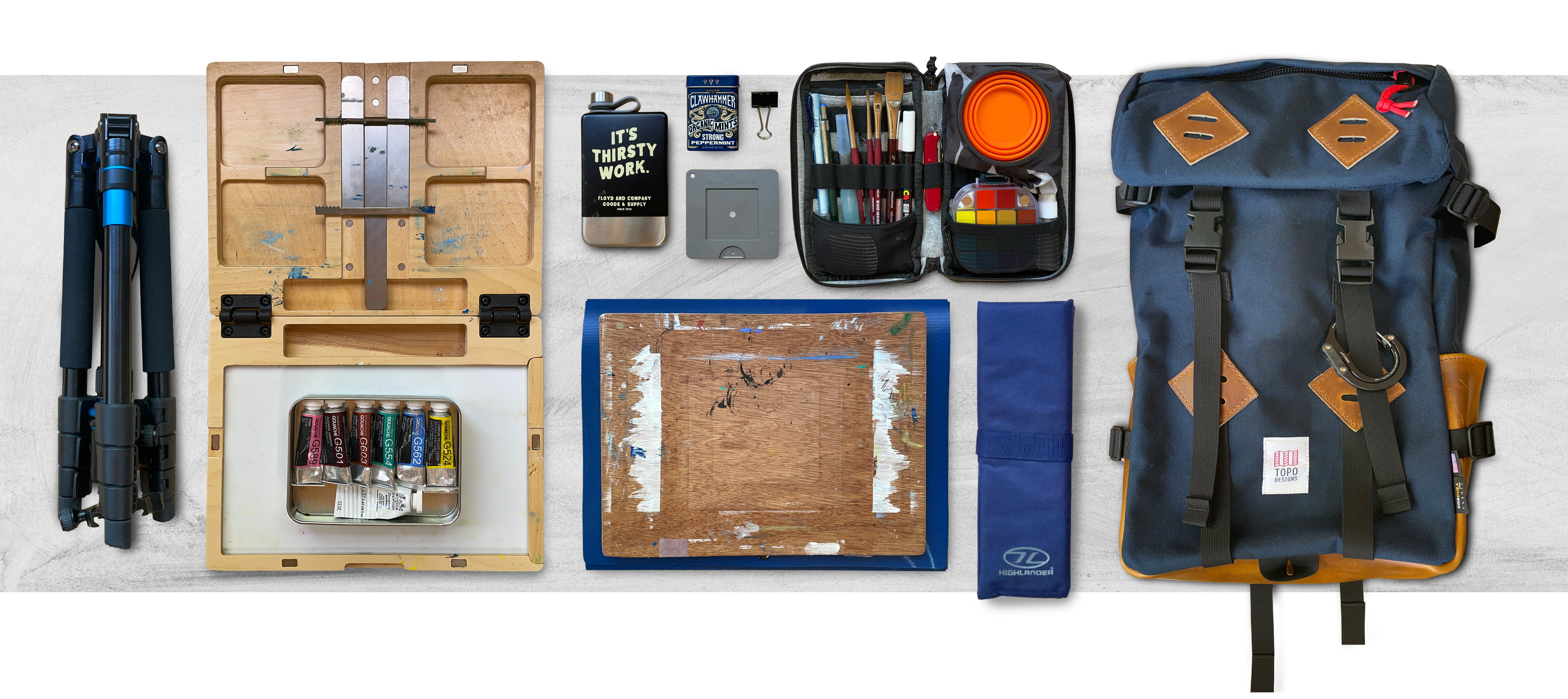
No Plein, No Gain
I use an U.go Plein Air Pochade Box (Medium, 8.4×11.25”). Although at the higher end of the price range, it is beautifully crafted, can be mounted on a tripod and is a pleasure to work on. When closed it is the same size as a laptop so will carry nicely in the laptop compartment of most backpacks while in transit. That said, If you’re looking for a more affordable solution, a simple drawing board will absolutely work. Then to transport my artwork I use a hard A4 folder which also holds a thin drawing board that I stretch my paper onto.
The Only Thing In My Bag Is Other Smaller Bags
Fancy organisers like field cases, bamboo brush rolls, molle pouches and dopp kits are nice and may make you feel tacticool but a humble high school pencil case works perfectly well. Whatever you choose, the point is to transport your supplies as comfortably as possible, keep things easily portable and yourself organised. Before the pallet I currently have I used a travel wash bag to carry paints. Simply because it’s light, has just enough organisation and is relatively water resistant too!
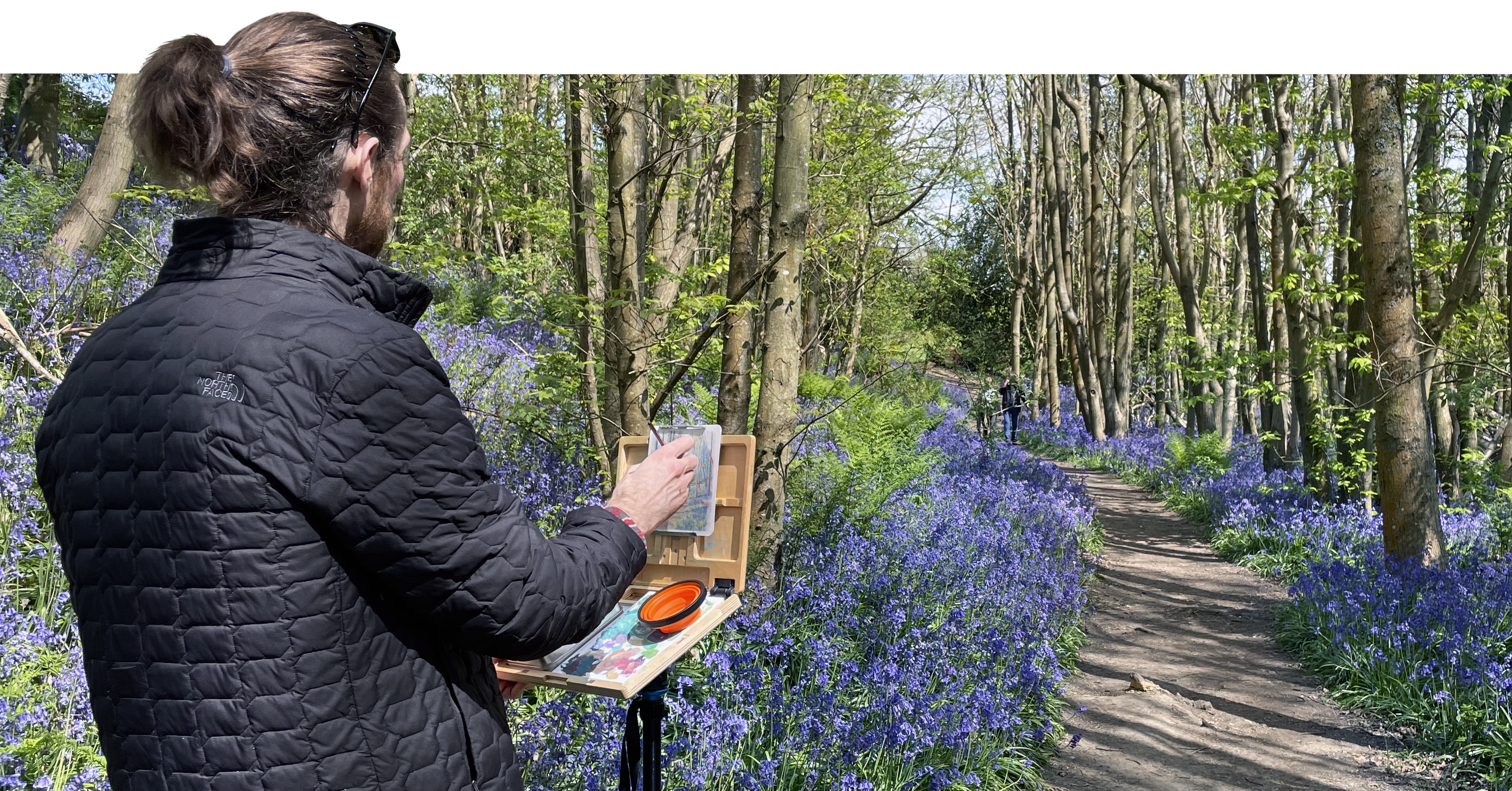
Nice to Haves
There’s a special category of items when considering your portable art kit I learnt from one bag travel (carry on luggage only). The items you look at and say ‘I might need you, but I never wanna see you’. I try to keep these items to a minimum but as long as they’re not too heavy and aren’t a burden. They sure are handy.
Stay Hydrated
A water bottle is always a smart choice because not only can you stay hydrated but when you need a splash of water for your paints, it’s right there. However if you’re mindful of your wastewater once you’ve finished your outdoor masterpiece, use something like an hip flask or empty mouthwash bottle to carry it back to civilisation and a drain where the water can be poured away safely and treated. The cap clicks shut, it’s low profile and minty fresh!
Also, bring snacks. Being creative takes energy! So keep yourself topped up with healthy fuel. I use a lunch cool bag or a stuff sack because they both squash down once empty and it can serve double duty as a means to carry any littler with you home.
Something for Your Butt
I have used camping chairs and collapsible stools but I’ll only take one if I don’t plan on walking far. A packable hiking sit mat is just right for my bouncy booty and has saved my hiney on more than one occasion from the cold perches, soggy grass and pointy rocks!
Hero Clip
Clamps, clips and carabiners are useful for pinning thing down or attaching them to yourself. One handy hook I’ve found great use for is a HeroClip which can weight of my fully loaded backpack. It can be a lifesaver if you’d rather hang your bag up out of the mud from the back of your car, a nearby railing or tree branch.
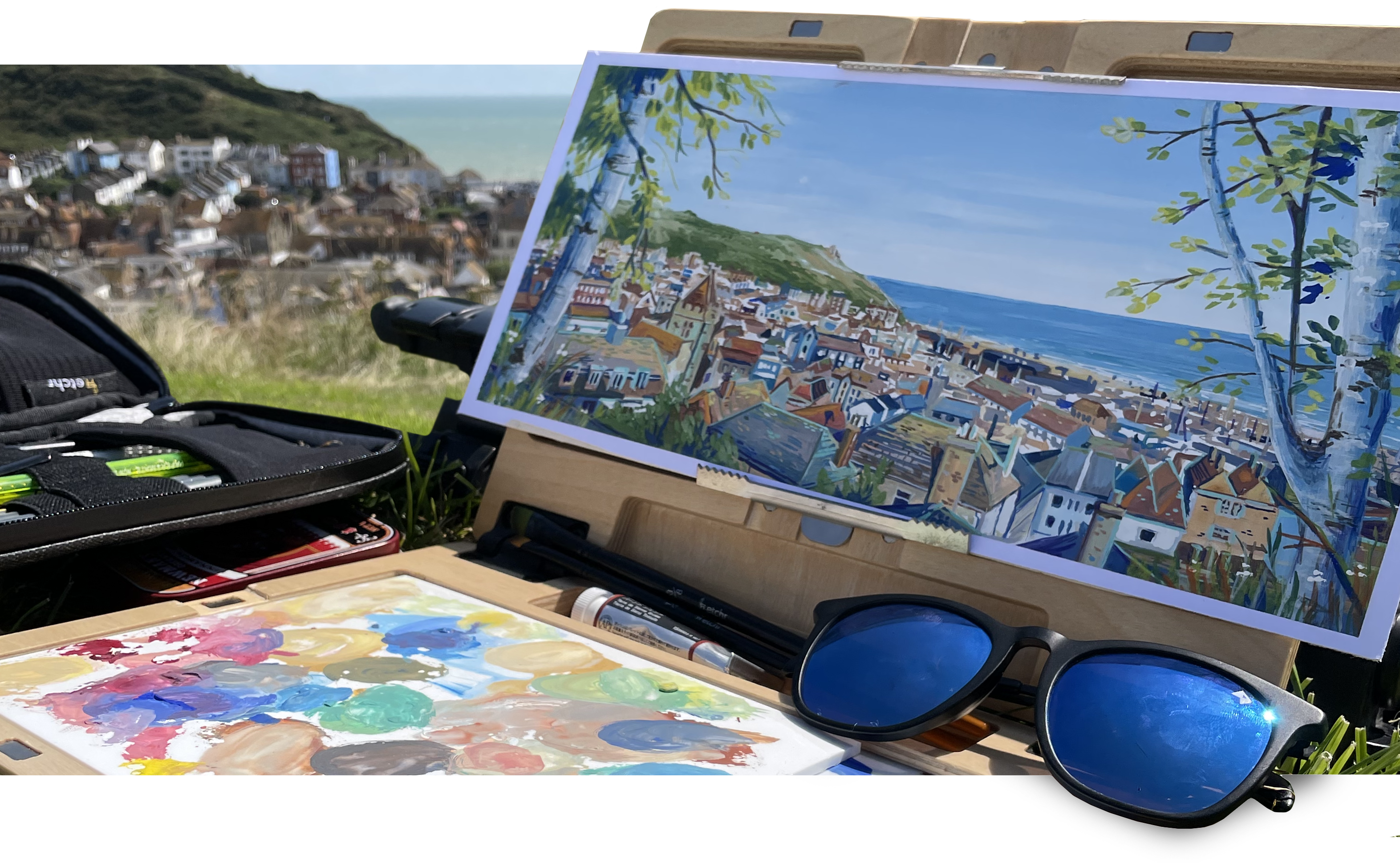 Sunglasses!
Sunglasses!
I do carry these to protect my peepers but please don’t wear them while painting. Though you may be contending with bright sun at times, a pair of sunnies alter colour balance and can therefore affect how you perceive and use your palette. Wear whatever you like! A brimmed beanie, boonie or baseball hat to counter the elements and look quite dashing while you’re at it. – Cartoonishly oversized floppy straw sun hats are acceptable too.
Take pictures!
Have a camera or smartphone with you when painting en plein air to capture a visual reference. Painted studies capture atmosphere as no photograph ever could, but a camera can capture details in an instant. Using a photograph as a visual reference for your painting can ensure consistency in your work in the face of changes in climate and the like. Working in the wild may be the grandest studio there is, but there’s no shame in taking cover when the stormy weather rolls in!
Business Cards
One of my favourite things is striking up conversations with curious passers by, most people are chatty and friendly and who knows what it might lead to! So have your tastefully designed business cards to hand and network like a pro because that’s exactly what you are!
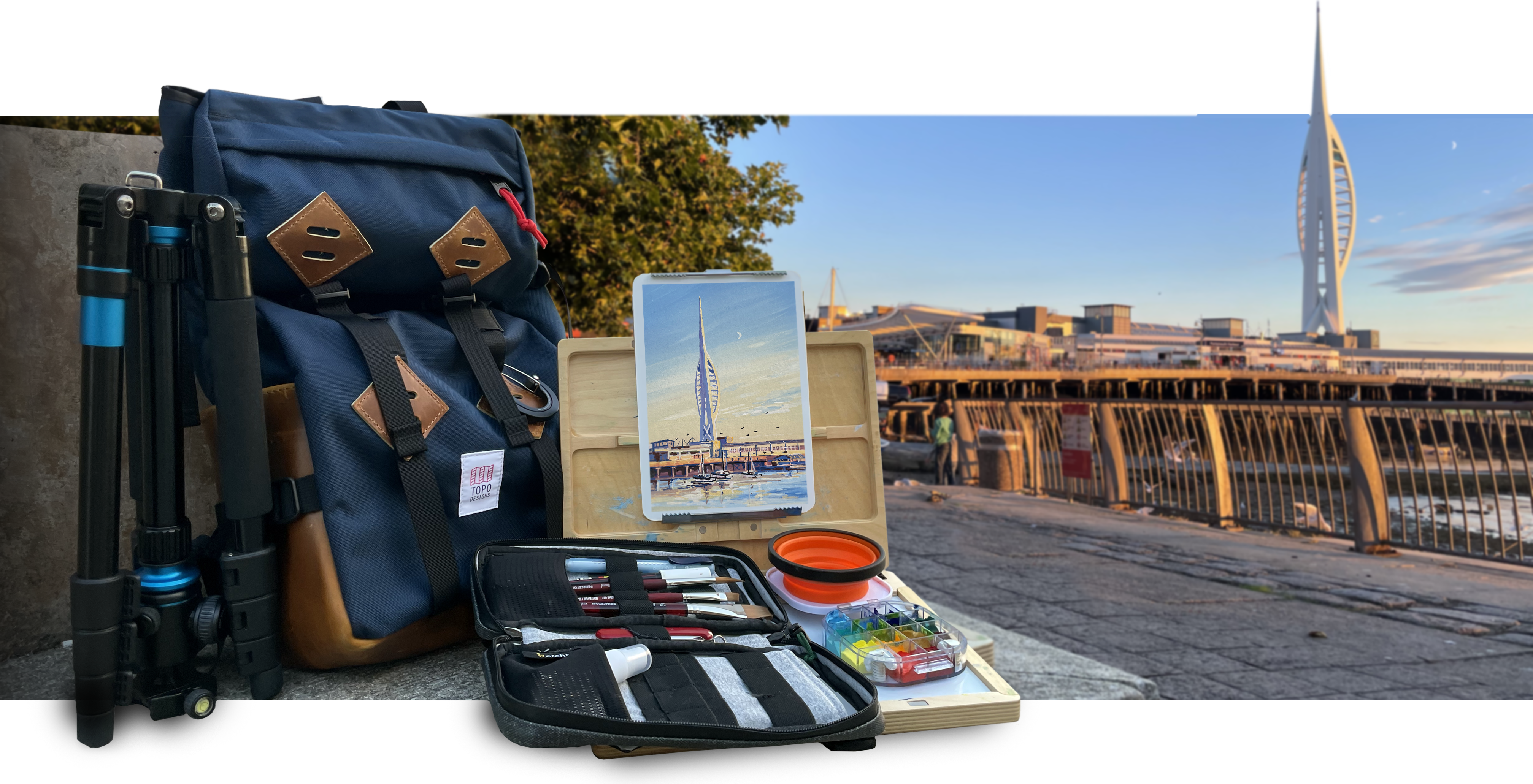
In summary
Finding what works best for you is like a fun puzzle to solve. Get creative with your kit and ask yourself, do you need an army of brushes when painting studies on location, or just one or two? Jettison anything from your painting box that you don’t really need because if you travel light, the further you can go.
Most importantly, focus on your art. All this kit is fun but it has to serve the purpose of creating to be worthwhile. I’ve learnt more from painting outside than I ever have studying in the studio and any trip can turn into an adventure. So keep it simple, expand if it feels right, pursue what excites you and if you have any tips of your own I’d love to hear them!
For further reading about my favourite art materials click here, or check them out in a product list here.
Let’s both have fun being creative in the wild!
